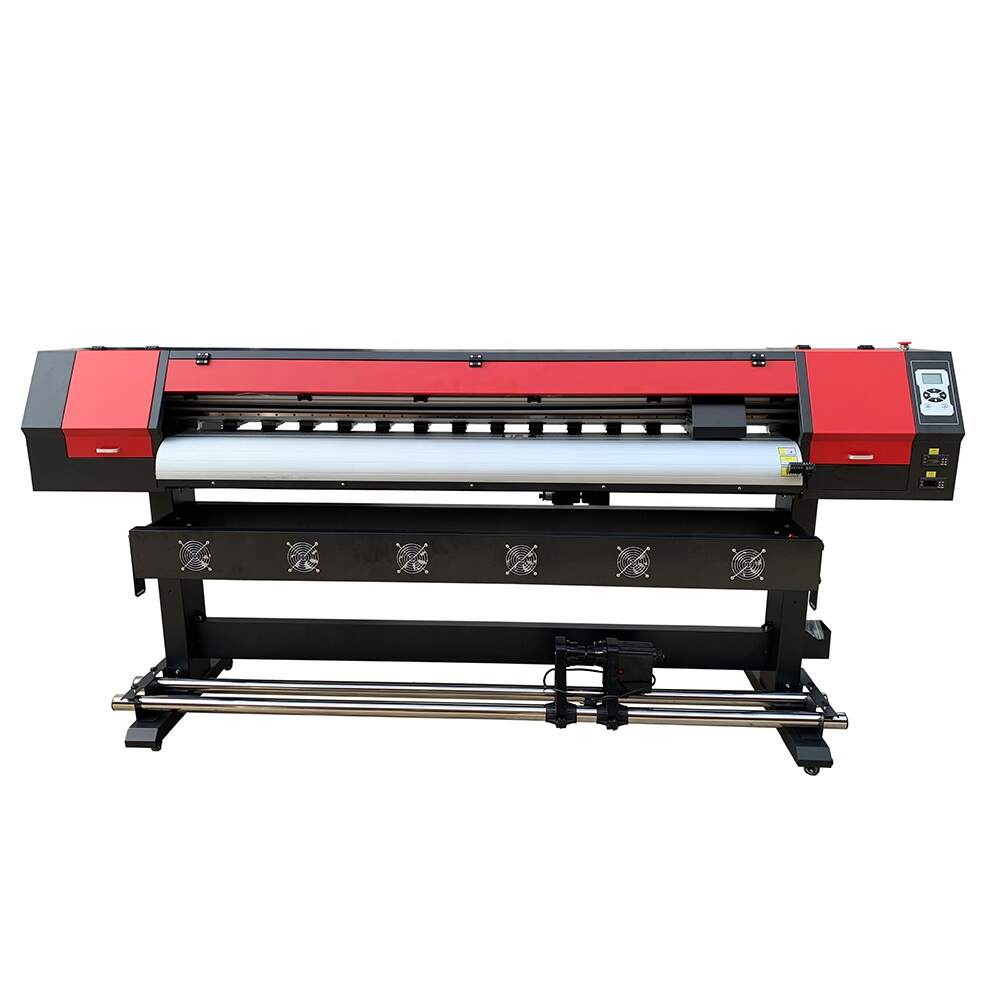The Principle of Inkjet Printers
July 28,2022
The working principle of an inkjet printer is relatively simple. When the printing paper passes through the inkjet head, the main control circuit is driven by the printing signal and accelerated by a strong magnetic field, so that the ink is ejected onto the printing paper at a very high speed to realize inkjet printing. The process is similar to that of a dot matrix printer, except that the ribbon is turned into a more direct ink and stored as a liquid in the ink cartridge, and the print needle is replaced by an array of tiny ink nozzles through which the ink flows from the inkjet head. It is evenly ejected in the middle, and adheres to the printing paper very regularly, forming a high-quality printing effect.
Inkjet printers can be divided into continuous inkjet and random inkjet according to the different inkjet methods.

Continuous inkjet technology
Printers using continuous inkjet technology are represented by charge-controlled inkjet printers. This inkjet technology was commonly used before the 1990s. It has only one nozzle, a charging electrode, a deflection electrode and an ink recycler in front of the nozzle, as shown in Figure 3.4. When printing, the ink pump applies constant pressure to the ink, so that the ink is continuously ejected from the nozzle, and then the charging electrode controls the electric charge in a switch mode according to the printing information, and the analog modulator encodes the part according to the generated characters and graphics information. The ink particles are charged to form both charged and uncharged ink particles. When the ink particles pass through the electromagnetic field formed by the deflection electrode, the charged ink particles are deflected by the electrostatic deflection and sprayed to different positions on the printing paper to form characters or graphics, while the non-charged ink particles do not pass through the deflection electrode. It deflects and goes directly into the ink reclaimer, where it can be reused after being filtered.
A printer using this inkjet technology has a faster printing speed and does not require high printing paper, so it is easy to achieve color printing, but it is easy to cause waste of ink.
Random inkjet technology
After the 1990s, with the development of inkjet printers in the direction of miniaturization, low cost and popularization, random inkjet printers gradually became the mainstream of the market.
Compared with continuous inkjet technology, this inkjet technology removes the ink pump and ink recovery device, and the ink is randomly ejected from the nozzle as needed. In order to improve the inkjet printing speed, the random inkjet printer adopts a multi-nozzle structure in the design of the inkjet head, that is, a plurality of nozzles are arranged in a row in a manner similar to the arrangement of the needles of the needle-type printing head. This nozzle structure is convenient for miniaturization, and is commonly used in most home inkjet printers at present.
In addition, random inkjet technology can be subdivided into piezoelectric type and bubble type according to the different ink driving methods.
kind.
Piezo Inkjet Technology
Each side of the inkjet head is equipped with a piezoelectric crystal, which is controlled by the printing signal. The piezoelectric crystal is deformed under the action of the pulse voltage, and the ink in the inkjet head is ejected from the nozzle in the form of ink droplets under the condition of being squeezed by the outer piezoelectric crystal. This inkjet method can also be subdivided into three types: piezoelectric tube type, piezoelectric diaphragm type and piezoelectric sheet type. At present, EPSON series printers mostly use this inkjet technology.
Bubble Inkjet Technology
Bubble inkjet, also known as electrothermal inkjet, works as follows:
- There is a heating element inside the inkjet head. Under normal circumstances, the ink inside the inkjet head reaches a relative balance with the external atmospheric pressure under the action of surface tension, and is in a stable state.
- When the printer receives the print signal, the print data applies an electrical pulse signal to the inkjet head through the drive circuit, and the heating element inside the printhead rapidly heats up, causing the temperature of the nearby ink to rise sharply and vaporize, thereby forming small bubbles.
- The small bubbles gradually become larger and form a vapor film.
- When the pulse signal disappears, the continuous residual heat causes the bubble to expand further, the pressure generated inside pushes the ink out of the nozzle, and the temperature of the heating device begins to drop.
- As the surface temperature of the heating device decreases, the boundary between the bubble and the ink begins to cool. Since the front end of the ink has been extruded from the nozzle, and the rear end has reduced the internal pressure of the nozzle due to the contraction of the ink, a negative pressure is generated at the nozzle, and then the ink is sucked back into the nozzle.
- Under the action of negative pressure, the ink is sucked back into the nozzle, forming ink droplets at the nozzle.
- When the bubbles in the nozzle disappear, the negative pressure continues to act, the ink droplets are completely separated from the nozzle, the remaining ink is sucked back into the nozzle, and the nozzle returns to the initial equilibrium state.
Conclusion
For more information about large inkjet printer for vinyl,large scale inkjet printer,large size inkjet printers, we are glad to answer for you.